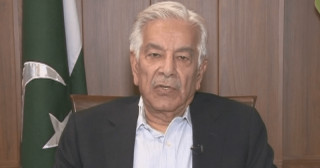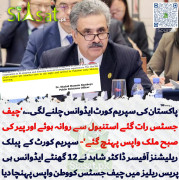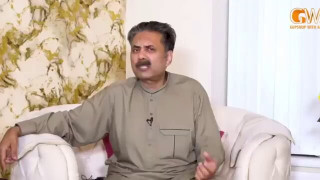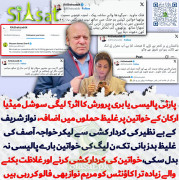Pakistani1947
Chief Minister (5k+ posts)
Moon Sighting or Astronomical Calculation - Dr. Louay Safi
This article is a condensed summary of a scholarly paper entitled "Reading, Sighting, and Calculating
From Moon Sighting to Astronomical Calculation." Please click here to view the full paper]
The Fiqh Council of North Americas ruling in favor of using astronomical calculations for determining
the beginning of the Muslim lunar month provoked a strong response, and the American Muslim
community continues to be divided over this issue. Scholars on the two sides of the divide present
arguments rooted in Islamic traditions, and often support their views by citing the same Quranic and
Prophetic sources, or by referring to statements by early Muslim scholars.
It does not take much for an observer to realize that the division and disagreements are not about the
sources themselves, but about how the sources are read. The division is between scholars who place
emphasis on the apparent meaning of the text and those who emphasize its intended meaning and
purpose.
The arguments for relying on sighting the new crescent as a means to determining the Islamic calendar
confound religious duties with the empirical knowledge and practical skills required to identify the days
on which these religious duties commence. Observing Ramadan and performing Hajj is ibadah (religious
duty), but observing the new crescent after birth to determine the beginning of the lunar month is not.
The latter relate to the human capacity for determining the birth of the new crescent, and it is a function
of the observers physical capacity to identify the new crescent. This capacity varies, needless to say,
with the knowledge of the position of the new crescent in the sky, the sharpness of the eye-sight of the
observer, the access to refined tools, the climatic conditions, etc.
Although some Muslims tried to root the practice of moon sighting, particularly for the month of
Ramadan, in the Quranic and Prophetic injunctions, a closer examination of the Quran shows that it
regards fasting of Ramadan and performing of Hajj as religious obligations, but considers the sun and
moon movements as part of the natural order.
The Prophet, indeed, directed the companions to establishing the first day of Ramadan by sighting the
moon, but then he stated that the reason for his directive was the inability of early Muslim community to
provide accurate calculation. The community, he pointed out, was then illiterate and did not master
reading, writing, or calculation. They had no experienced astronomers who have access to the
knowledge, tools, and facilities to determine with accuracy the beginning of the lunar month.
Consequently, Moon sighting was the only tool available for the early Muslim community.
If the distinction between these two areas of knowledge is confirmed, then the only reason for moon
sighting to be favored over astronomical calculation is when the former is more accurate in determining
the birth of the new crescent than the latter.
Early Muslim scholars agreed, by and large, on Moon sighting as the only acceptable way for
determining the beginning of the new lunar month. However, their consensus was greatly influenced by
the state of the science of astronomy, as well as the lack of direct access by the scattered Muslim
villages and towns to reliable astronomers. The consensus reached by early Muslim jurists on rejecting astronomical methods resulted from the lack
of any clear line of demarcation between astronomy and astrology. Most early Muslim scholars equated
astronomy with magic and fortunetelling.
The basis of the historical consensus on moon sighting has changed. Today, astronomers can calculate
with great precision the date and time of birth of the new moon. Moon sighting, on the other hand, has
become less reliable, as the conditions of the sky and the observers have deteriorated markedly over the
last two centuries. Muslims do not only live in middle latitude regions of mostly clear skyas was the
case in the early years of Islambut also in high latitude regions where the moon can rarely be sighted,
and in areas of high humidity and frequent rain. The sky conditions have worsened in most inhabited
regions.
Observation of the new moon is quite disturbing in countries where Muslims do not employ the service
of qualified observers using advance tools and facilities. Communities in the United States, for instance,
rely on claims by ordinary Muslims with limited experience and astronomical knowledge. Even in
Muslim countries where fairly advanced facilities are available, religious authorities accept the sighting
of laymen with little or no training.
It must be asserted, therefore, that astronomical calculations provide a higher degree of certainty than an
actual Moon sighting. For while astronomical calculation provide a precise date and time of the birth of
the new moon, sighting the Moon produces, even with the use of advanced telescopes, less accurate and
reliable results.
Yet the actual choice is not one in which we are asked to choose between astronomical calculation
and moon sighting. The choice is really between calculations and individual testimonies. For
several centuries, the Hanafi school of fiqh required that every qualified person must go to open fields
outside his village and town to observe the new moon. Other school of fiqh required two qualified
witnesses, in some cases one, to verify the actual sighting of the moon.
Those who insist that Muslims abandon astronomical calculation and rely on individual
testimonies are in actuality asking Muslims to abandon the certainty of reliable knowledge, for the
inconsistency of unverifiable individual reports. Individual reports, every student of fiqh knows,
produce uncertain knowledge (marifah zanniyah). This is amply illustrated by the established records of
Moon sighting testimonies. These testimonies have been exceedingly inconsistent, and have resulted in
numerous contradictions and reversals.
There is an ample evidence to convince anyone who is familiar with both shariah injunctions and
contemporary astronomy that astronomical calculations provide a more reliable and certain approach for
determining the beginning of the Islamic lunar months. The fact that contemporary Muslim scholars are
reluctant to embrace this certainty underscores the challenges facing contemporary Muslim scholarship.
The Fiqh Council of North Americas decision to formally adopt astronomical calculation represents a
major step forward in overcoming historical inertia. Although the decision of the FCNA has not so far
brought about a consensus among North American Muslims, it has set the foundation for the
development of a position that can potentially bring a new consensus in deciding the beginning of
Ramadan and the two Eids for the world-wide Muslim community.
This article is a condensed summary of a scholarly paper entitled "Reading, Sighting, and Calculating
From Moon Sighting to Astronomical Calculation." Please click here to view the full paper]
The Fiqh Council of North Americas ruling in favor of using astronomical calculations for determining
the beginning of the Muslim lunar month provoked a strong response, and the American Muslim
community continues to be divided over this issue. Scholars on the two sides of the divide present
arguments rooted in Islamic traditions, and often support their views by citing the same Quranic and
Prophetic sources, or by referring to statements by early Muslim scholars.
It does not take much for an observer to realize that the division and disagreements are not about the
sources themselves, but about how the sources are read. The division is between scholars who place
emphasis on the apparent meaning of the text and those who emphasize its intended meaning and
purpose.
The arguments for relying on sighting the new crescent as a means to determining the Islamic calendar
confound religious duties with the empirical knowledge and practical skills required to identify the days
on which these religious duties commence. Observing Ramadan and performing Hajj is ibadah (religious
duty), but observing the new crescent after birth to determine the beginning of the lunar month is not.
The latter relate to the human capacity for determining the birth of the new crescent, and it is a function
of the observers physical capacity to identify the new crescent. This capacity varies, needless to say,
with the knowledge of the position of the new crescent in the sky, the sharpness of the eye-sight of the
observer, the access to refined tools, the climatic conditions, etc.
Although some Muslims tried to root the practice of moon sighting, particularly for the month of
Ramadan, in the Quranic and Prophetic injunctions, a closer examination of the Quran shows that it
regards fasting of Ramadan and performing of Hajj as religious obligations, but considers the sun and
moon movements as part of the natural order.
The Prophet, indeed, directed the companions to establishing the first day of Ramadan by sighting the
moon, but then he stated that the reason for his directive was the inability of early Muslim community to
provide accurate calculation. The community, he pointed out, was then illiterate and did not master
reading, writing, or calculation. They had no experienced astronomers who have access to the
knowledge, tools, and facilities to determine with accuracy the beginning of the lunar month.
Consequently, Moon sighting was the only tool available for the early Muslim community.
If the distinction between these two areas of knowledge is confirmed, then the only reason for moon
sighting to be favored over astronomical calculation is when the former is more accurate in determining
the birth of the new crescent than the latter.
Early Muslim scholars agreed, by and large, on Moon sighting as the only acceptable way for
determining the beginning of the new lunar month. However, their consensus was greatly influenced by
the state of the science of astronomy, as well as the lack of direct access by the scattered Muslim
villages and towns to reliable astronomers. The consensus reached by early Muslim jurists on rejecting astronomical methods resulted from the lack
of any clear line of demarcation between astronomy and astrology. Most early Muslim scholars equated
astronomy with magic and fortunetelling.
The basis of the historical consensus on moon sighting has changed. Today, astronomers can calculate
with great precision the date and time of birth of the new moon. Moon sighting, on the other hand, has
become less reliable, as the conditions of the sky and the observers have deteriorated markedly over the
last two centuries. Muslims do not only live in middle latitude regions of mostly clear skyas was the
case in the early years of Islambut also in high latitude regions where the moon can rarely be sighted,
and in areas of high humidity and frequent rain. The sky conditions have worsened in most inhabited
regions.
Observation of the new moon is quite disturbing in countries where Muslims do not employ the service
of qualified observers using advance tools and facilities. Communities in the United States, for instance,
rely on claims by ordinary Muslims with limited experience and astronomical knowledge. Even in
Muslim countries where fairly advanced facilities are available, religious authorities accept the sighting
of laymen with little or no training.
It must be asserted, therefore, that astronomical calculations provide a higher degree of certainty than an
actual Moon sighting. For while astronomical calculation provide a precise date and time of the birth of
the new moon, sighting the Moon produces, even with the use of advanced telescopes, less accurate and
reliable results.
Yet the actual choice is not one in which we are asked to choose between astronomical calculation
and moon sighting. The choice is really between calculations and individual testimonies. For
several centuries, the Hanafi school of fiqh required that every qualified person must go to open fields
outside his village and town to observe the new moon. Other school of fiqh required two qualified
witnesses, in some cases one, to verify the actual sighting of the moon.
Those who insist that Muslims abandon astronomical calculation and rely on individual
testimonies are in actuality asking Muslims to abandon the certainty of reliable knowledge, for the
inconsistency of unverifiable individual reports. Individual reports, every student of fiqh knows,
produce uncertain knowledge (marifah zanniyah). This is amply illustrated by the established records of
Moon sighting testimonies. These testimonies have been exceedingly inconsistent, and have resulted in
numerous contradictions and reversals.
There is an ample evidence to convince anyone who is familiar with both shariah injunctions and
contemporary astronomy that astronomical calculations provide a more reliable and certain approach for
determining the beginning of the Islamic lunar months. The fact that contemporary Muslim scholars are
reluctant to embrace this certainty underscores the challenges facing contemporary Muslim scholarship.
The Fiqh Council of North Americas decision to formally adopt astronomical calculation represents a
major step forward in overcoming historical inertia. Although the decision of the FCNA has not so far
brought about a consensus among North American Muslims, it has set the foundation for the
development of a position that can potentially bring a new consensus in deciding the beginning of
Ramadan and the two Eids for the world-wide Muslim community.
Last edited:













































